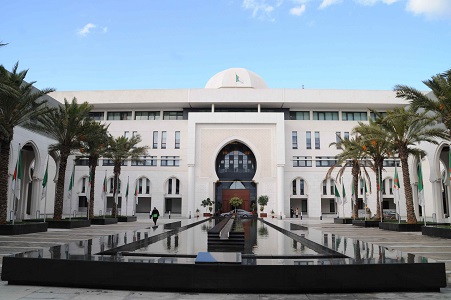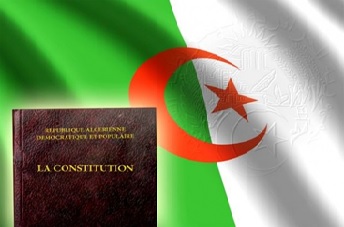Văn hóa
A land of hospitality, Algeria is known for its cultural heritage that developed with the course of time as well as for its civilizations that crossed this land from the dawn of history, to draw the contours of a perfect mosaic of the cultural richness of the Algeria of today. Algerian culture has also been strongly influenced by Islam.
Essentially, the culture of Algeria it is a fascinating blend of varied Religion, Music, different Languages spoken across the country and its rich literary extravaganza.
Language
Arabic is Algeria's primary and official language. In addition to Arabic, many Algerians speak Amazigh, which is also the second official language.
Furthermore and because of French colonialism, the French language has become highly used among population.
Modern Algerian Literature
Modern Algerian literature, split between Arabic and French, has a strong influence of the country's recent history. Famous novelists of the twentieth century include Mohammed Dib, a Noble Prize winner Albert Camus, and Kateb Yacine, while the works of Assia Djebar and Ahlam Mustaghanmi reflecting women’s perspective about the contemporary life in Algeria are widely translated.
In spite of there being a divide between the French and Arabic literature, Algeria has given birth to some of the most renowned writers in the world. Algeria counts among its literary stars both French writers who lived and wrote in Algeria like Albert Camus and Emmanuel Robles as well as native Algerians, some of whom have chosen to write in the colonial language, such as playwright Kateb Yacine, and some of whom wrote in Arabic or Berber dialects. One advantage of writing in French is that it allows the books to be published in France, and then distributed in both France and Algeria.
The choice to write in Arabic or Berber, however, is often an act of national pride, and creates a different audience for the work. Many Algerian writers are influenced both by the European literature and the ancient Arabic tradition of storytelling.
There are several famous Arabic and French writers some of them are Rachid Mimouni, Tahar Djaout, Jacques Derrida, Malek Ben Nabi and Frantz Fanon known for their thoughts against decolonization.
The Algerian Art
Algeria’s art is a store of the richest and vivid artworks largely found in the famous Art Galleries and bustling markets of Algeria. They contain intricately woven handicrafts, fascinating paintings, antiques and lively sculptures that reveal extraordinary talent and skills of the Algerian artists. One can find awe-inspiring masterpieces in the National Gallery of Fine Arts and can get enchanted by the works of eminent artists such as Renoir and Mohammed Khadda, and local artists like Racim and Yelles.
Musical Genre
The Algerian musical genre best known abroad is Rai (from Arabic ray, meaning “opinion” or “view”), a pop-flavored, opinionated take on folk music, featuring international stars such as Khaled and Cheb Mami. In Algeria itself the style of Rai remains the most popular, but the older generation still prefers Chaabi which is very popular with stars such as El Hadj El Anka and Dahmane El Harrachi making their mark at the local music scene.
The tuneful melodies of Kabyle music, exemplified by Idir, Ait Menguellet, or Lounès Matoub, also have a wide audience. For more classical tastes, Andalusi music, brought from Al-Andalus (Spain), is preserved in many Algerian towns. Sharawi music is also very popular in the south of Algeria with renowned singers as Khelifi Ahmed, Ababsa and Mnai.
The Algerian Government has institutionalized seven annual festivals of local and regional music in order to contribute to the promotion and revival of local music in Algerian cities and villages.
The Algerian poetic and musical genre, the Ahellil of Gourara, was proclaimed a Masterpiece of the Oral and Intangible Cultural Heritage of UNESCO in 2005.
Painting
Painting is not new to Algerian soil. Thousands of engravings on rocks in the Tassili region vouch for this art being practiced since the Neolithic era. Algerian painters such as Racim, master of miniature and illuminator arts, thereafter defined contours of Algerian painting.
Another artistic movement known as expressionism was born and taken to its highest level M’hamed Issiakhem and Bachir yelles.
Cinema
Algeria has maintained a lively film industry. The first major postcolonial production was the celebrated film produced in 1965 (The Battle of Algiers), a story about Algeria’s struggle for independence from the French colonial rule. Depicting the real face of the oppressor in documentary style, this film won several international awards.
The following year, Mohammed Lakhdar-Hamina directed Rih al-Awras (The Winds of the Aures). His chronicle of the Years of Fire in 1975 (Chronicle of the Year of Embers), another gritty tale of the revolution, was awarded the Palme d’Or at the Cannes film festival nearly a decade later. Vivre au paradis (1997; Living in Paradise) directed by Boualem Guerdjou showing difficulties of the Algerian Diaspora in France was a big hit. With hundreds of productions and co-productions, international acclaim and a talented potential, Algerian cinema has all assets for a bright future.
Handicrafts
Algeria has a thriving handicrafts industry. From carpets to ceramics and pottery, from leather to glass work and silverwork, the country has a tremendous variety of skills that produce goods which are sold in many other countries. The country is also famous for its M’Zab carpets and Kabyle jewelry.
Algerian crafts are unique and vibrant in color. The craftsmen are extremely talented and their skills cover a wider market than just that of carpets and pottery. Wooden sculptures, weaving, basket making, and jewellery design is an art and a tradition that has been passed through many generations of Algerian artisans. Not only is the craft industry a form of income and employment, but an expression of Algeria’s rich culture, rituals and proverbs.
The carpets that are woven by the Algerian women, are unique to the area they live in. Each carpet displays certain characteristics and features that make these carpets one of a kind. For nomadic Algerians, their tents and carpets are an important part of their lifestyle and both are as important as the other to their owners.
Leather work and craft is also an import part of the Algerian craft industry, as Belgha or slippers that are made by these craftsmen are still a favorite purchase by locals and tourists and are in high demand in other countries. The beautifully handcrafted and decorated leather can be seen on shields and weapons, and the manufacturing of leather wallets, handbags and saddles have become increasingly popular.
In 2006, it was estimated that approximately 200 000 Algerians were employed by the crafts industry in Algeria. The traditional crafts such as carpets, pottery, metal craft and leather work are an important income to the country. The Algerian Government has realized the significance of the industry and has lent its full support of reviving the craft industries for the export and for tourism.





